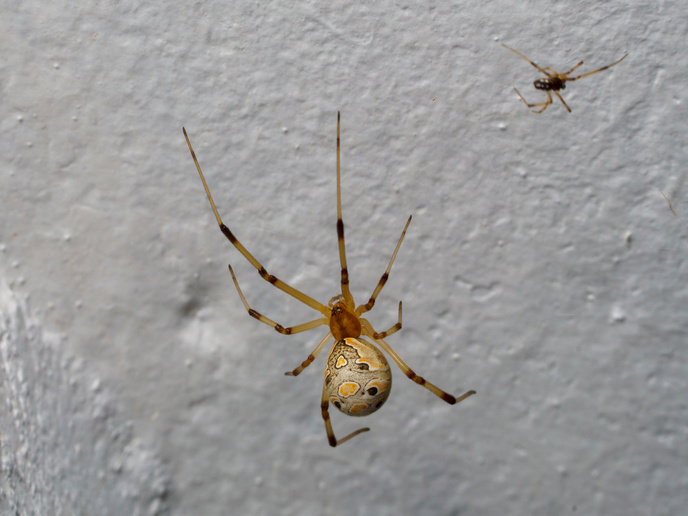Why are male spiders willing to die for sex?
Mating behaviour is a compelling topic for evolutionary biologists, with sexual cannibalism particularly puzzling. “While rare among mammals and vertebrates, sexual cannibalism is quite common among spiders and other arachnids such as scorpions,” says Sentenska, an animal behaviour researcher at the University of Greifswald. That these males sacrifice themselves in order to reproduce seems to fly in the face of evolutionary theory, where a more common strategy is to mate with as many partners as possible, to maximise the chances of one’s genes being passed on. To help untangle this web, Sentenska’s research has focused recently on Latrodectus geometricus, otherwise known as brown widow spiders.
A meeting of unequals
Sentenska admits that part of the allure of her research was the iconic status of widow spiders. With over 30 species, self-sacrifice has only been found in two: redbacks and brown widows. “But as mating hasn’t been studied in the majority of species, the true extent of self-sacrifice isn’t known,” adds Sentenska. Female brown widows are sedentary, meaning males have to travel to them to mate, and the species features pronounced sexual size dimorphism, with females markedly bigger than males. This last point seems to rule out nutritional demand as a driver for sexual cannibalism, as has been hypothesised for species such as mantises, where the males and females are more equal in size. “While in some species there are indications that sexual cannibalism is driven by female hunger, with brown widows, as the male is only about 4 % of a female’s body mass, he isn’t really a meal,” explains Sentenska. The idea that males, with a low cost of reproduction, should seek multiple partners is a “theoretical simplification,” she notes. “Studies which tracked and labelled other widow spider species have shown that only about 20 % of males actually find a mate, so their chance of finding another after mating is low.”
Fatal attraction
Sentenska’s mentor, Maydianne Andrade, first discovered that female redbacks were more reluctant to mate with other males after performing sexual cannibalism. However, Sentenska’s experiments with brown widows in the Widow Spider Mating project, which was funded by the Marie Skłodowska-Curie Actions programme, found that cannibalism in this species did not prolong copulation or reduce mate-seeking. “It is fascinating that the same self-sacrifice behaviour in the same genus seems to have different functions,” remarks Sentenska. “That’s the cool thing about science, you think you know something then find that it’s much more complicated.” The Widow Spider Mating project also examined the recently discovered phenomenon where adult male brown widows mated with immature females. Not only were the males able to pass on their genes successfully in these courtships, they were able to deliver more sperm, deposit more plugs to prevent future mating, and – crucially perhaps – they did not get eaten at the end of it. Of course, there’s a catch. “Male spiders are attracted to females through chemical signals – pheromones – and many female spiders only start producing them as adults,” notes Sentenska. “We found that even with all the associated dangers, males still preferred to approach adult females. It could be that they are simply following the stronger, or only, signal.” Even for spiders, love is a powerful spell. Click here to find out more about Sentenska’s research: Research explores male widow spider mating choices



